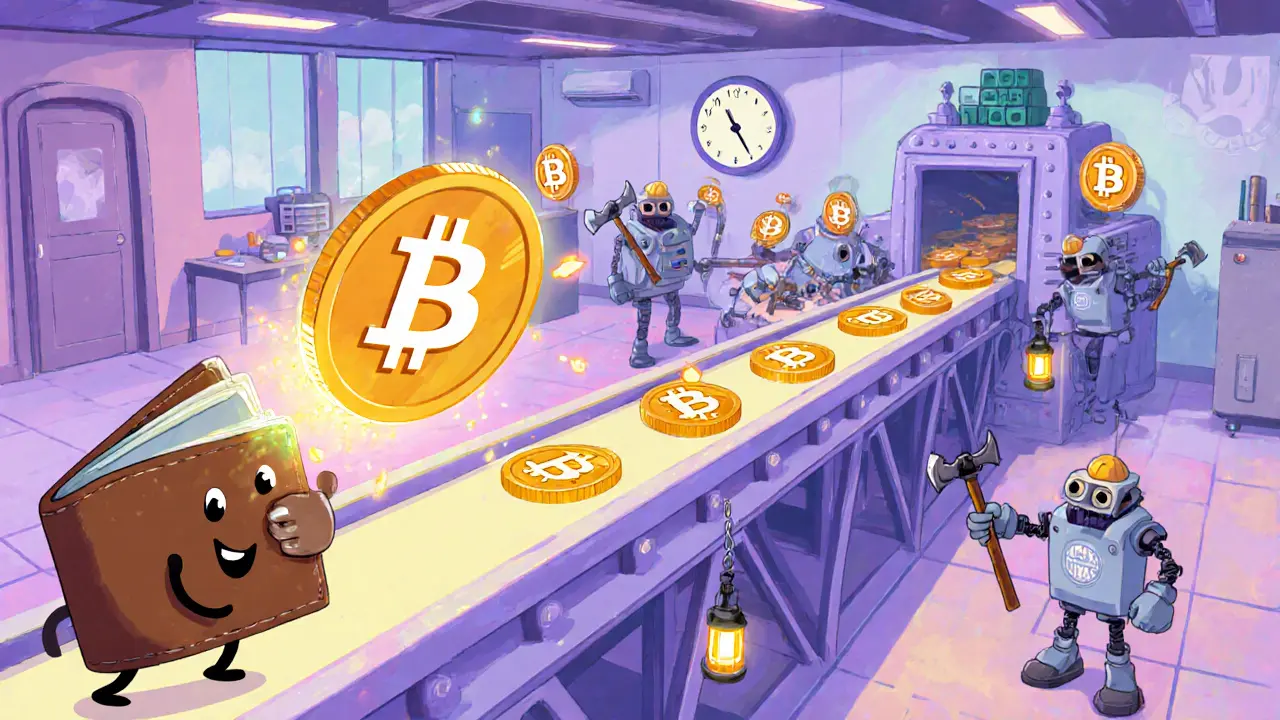Bitcoin Confirmation Explained
When dealing with Bitcoin confirmation, the process that locks a Bitcoin transaction by adding it to successive blocks. Also known as block confirmation, it makes the transaction immutable and resistant to reversal. The security comes from Mining, the computational work that creates new blocks on the Bitcoin blockchain using Proof of Work, a consensus mechanism requiring miners to solve cryptographic puzzles. Bitcoin confirmation is the backbone of trust for anyone sending or receiving BTC.
Every Bitcoin transaction starts as an unconfirmed entry in the mempool. Once a miner picks it up and includes it in a freshly mined block, the first confirmation is granted. Each subsequent block that builds on top adds another confirmation, increasing the confidence that the transaction cannot be undone. For everyday payments, six confirmations are the industry standard, while large‑value transfers often wait for twelve or more. The number of confirmations directly ties to the perceived risk of a double‑spend attack – the fewer confirmations, the easier it is for a malicious actor to try reversing the transaction.
Why Confirmation Counts Matter
Confirmation depth affects three practical aspects: security, speed, and cost. Higher confirmation counts mean stronger security but also longer waiting times, which can be problematic for fast‑moving markets. Some services, like crypto exchanges, automate the required confirmation threshold based on the transaction size and their own risk appetite. Others use techniques such as Replace‑by‑Fee (RBF) to speed up low‑value payments while still waiting for at least one confirmation.
Understanding how confirmations interact with transaction verification helps traders choose the right fee level. A higher fee usually incentivizes miners to include the transaction sooner, shortening the time to the first confirmation. However, the fee does not influence the number of confirmations after the transaction is in a block – that depends solely on the network’s block generation rate, roughly ten minutes per block, and the overall hash rate contributed by miners.
Beyond security, confirmations play a role in smart contract interactions on Bitcoin sidechains and Lightning Network channels. Sidechains often require a minimum number of main‑chain confirmations before accepting a peg‑in, while Lightning nodes wait for a single confirmation before opening a channel. These nuances illustrate how Transaction verification, the process of checking signatures and ensuring inputs are unspent is tightly coupled with the broader Bitcoin ecosystem.
Our collection below dives deeper into these concepts. You'll find guides on how block confirmations impact DeFi lending rates, analyses of mining profitability as it relates to confirmation speed, and real‑world case studies of exchanges handling confirmation thresholds. Browse the list to sharpen your understanding of Bitcoin confirmation and see how it shapes everything from airdrop eligibility to global crypto regulations.

